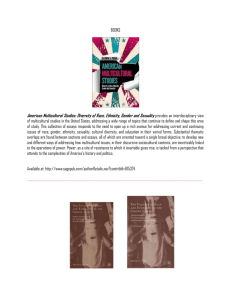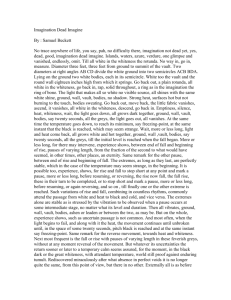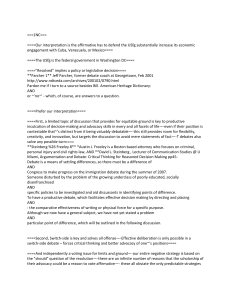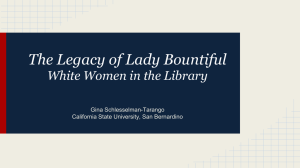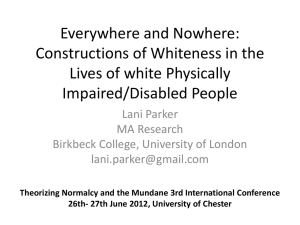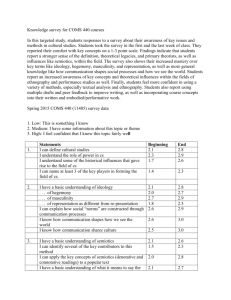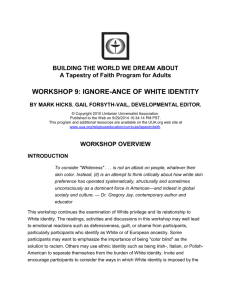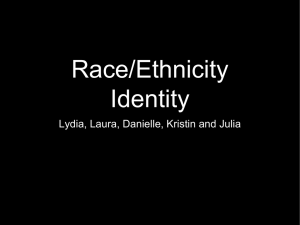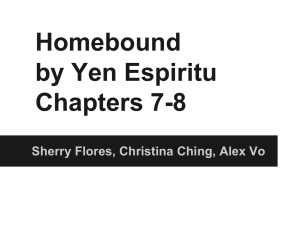Blum_address_-_IOI_2014
advertisement
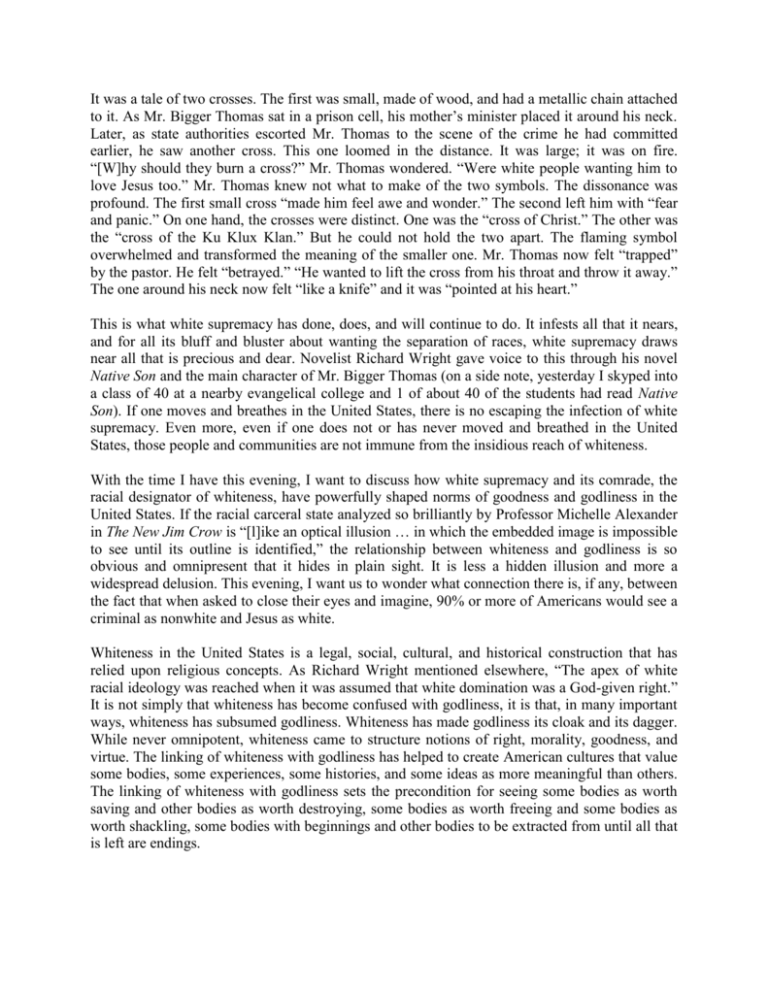
It was a tale of two crosses. The first was small, made of wood, and had a metallic chain attached to it. As Mr. Bigger Thomas sat in a prison cell, his mother’s minister placed it around his neck. Later, as state authorities escorted Mr. Thomas to the scene of the crime he had committed earlier, he saw another cross. This one loomed in the distance. It was large; it was on fire. “[W]hy should they burn a cross?” Mr. Thomas wondered. “Were white people wanting him to love Jesus too.” Mr. Thomas knew not what to make of the two symbols. The dissonance was profound. The first small cross “made him feel awe and wonder.” The second left him with “fear and panic.” On one hand, the crosses were distinct. One was the “cross of Christ.” The other was the “cross of the Ku Klux Klan.” But he could not hold the two apart. The flaming symbol overwhelmed and transformed the meaning of the smaller one. Mr. Thomas now felt “trapped” by the pastor. He felt “betrayed.” “He wanted to lift the cross from his throat and throw it away.” The one around his neck now felt “like a knife” and it was “pointed at his heart.” This is what white supremacy has done, does, and will continue to do. It infests all that it nears, and for all its bluff and bluster about wanting the separation of races, white supremacy draws near all that is precious and dear. Novelist Richard Wright gave voice to this through his novel Native Son and the main character of Mr. Bigger Thomas (on a side note, yesterday I skyped into a class of 40 at a nearby evangelical college and 1 of about 40 of the students had read Native Son). If one moves and breathes in the United States, there is no escaping the infection of white supremacy. Even more, even if one does not or has never moved and breathed in the United States, those people and communities are not immune from the insidious reach of whiteness. With the time I have this evening, I want to discuss how white supremacy and its comrade, the racial designator of whiteness, have powerfully shaped norms of goodness and godliness in the United States. If the racial carceral state analyzed so brilliantly by Professor Michelle Alexander in The New Jim Crow is “[l]ike an optical illusion … in which the embedded image is impossible to see until its outline is identified,” the relationship between whiteness and godliness is so obvious and omnipresent that it hides in plain sight. It is less a hidden illusion and more a widespread delusion. This evening, I want us to wonder what connection there is, if any, between the fact that when asked to close their eyes and imagine, 90% or more of Americans would see a criminal as nonwhite and Jesus as white. Whiteness in the United States is a legal, social, cultural, and historical construction that has relied upon religious concepts. As Richard Wright mentioned elsewhere, “The apex of white racial ideology was reached when it was assumed that white domination was a God-given right.” It is not simply that whiteness has become confused with godliness, it is that, in many important ways, whiteness has subsumed godliness. Whiteness has made godliness its cloak and its dagger. While never omnipotent, whiteness came to structure notions of right, morality, goodness, and virtue. The linking of whiteness with godliness has helped to create American cultures that value some bodies, some experiences, some histories, and some ideas as more meaningful than others. The linking of whiteness with godliness sets the precondition for seeing some bodies as worth saving and other bodies as worth destroying, some bodies as worth freeing and some bodies as worth shackling, some bodies with beginnings and other bodies to be extracted from until all that is left are endings. The historical examples we could share are almost limitless. We could examine laws developed in the British colonies that disconnected Christian baptism from emancipation and therefore allowed Christians to enslave their own spiritual brothers and sisters. We could discuss early national caricatures of African Americans as overly emotive in their religious behaviors, of Native Americans as savages who could not establish “Christian homes,” as Andrew Jackson put it in one of his presidential addresses, of Irish Catholic immigrants as apelike political pawns of the Vatican, of all women as small-brained daughters of Eve who let sin into the world, and, of course, of white Protestant men as rational, thoughtful beings made in God’s image and thus fit for political and religious authority here and in the hereafter. Throughout United States history, as you all well know, it is not hard to find examples. I would like us to consider the age of Mr. Bigger Thomas, the first half of the twentieth century, before the War on Drugs and the rise of the carceral state. I want to take some time remembering the decades before the modern civil rights movement so we can remind ourselves how notions of race and religion worked together to create assumptions of nonwhite criminality and of white virtuosity. It was in those decades, I think, that the logics and the logistics were made that still haunt our world. The early twentieth century was a momentous time. The United States gained a literal overseas empire with its military and political interventions in Cuba, the Philippines, Hawaii, Guam, and Puerto Rico. Each year, hundreds to thousands of Native American children were taken from their homes and sent to boarding schools. Upon arrival, they had their hair cut, their languages made illegal, and their connections to the rivers and the soil of their homelands were severed. If we open a newspaper from these decades, we can find daily acts of brutal violence. Just about every three days for thirty years, there was a lynching in the nation, an extra legal murder most often of an African American man. There is a reason one scholar, Rayford Logan, called this moment the “nadir” in race relations and not the era of slavery. Those of you who follow our news today may wonder if future historians will simply call our era “the nadir 2.0.” In the first decades of the twentieth century, some armchair theologians built their Christianity upon whiteness. One from Tennessee, Charles Carroll, produced a steady stream of works arguing that the original humans created in the Garden of Eden were white. People of color were actually the “beasts of the field” who were named and tamed by Adam. When white Americans referred to African American men as “beasts,” they were not simply dehumanizing humans. They were placing into the codes of racial violence theological algorithms that sanctified the policing of nonwhite bodies, the “beasts,” and the protection of white bodies, the imago dei. [IMAGE] Of course, Christianity and the Christian Bible have many beginnings. Whiteness endeavored to claim more than just Genesis. Increasingly, white American Christians discussed and displayed Jesus Christ as white too. White supremacy flowed from the “in the beginning” of Genesis to the “in the beginning” of the gospel of John. Explicit descriptions of Jesus as white and then Nordic or Aryan were not only established to separate him from African Americans; they were also made to disassociate him from Jewishness. One church educator of the era asked and answered, “Why is it that we never think of Christ as a Jew? Because he was more occidental than oriental, and more cosmopolitan than either. Born of a race which has always been characterized by great excitability and volubility, he was more like the best type of the modern Anglo-Saxon in his perfect self-command, his cool, steady eye, his capacity for reticence, and his love of brevity.” The use of Jesus to link whiteness with godliness ran through American culture. After 1915, a new piece of European artwork, Harold Copping’s “Hope of the World,” went viral in American churches and Sunday schools. “Hope of the World” subtly and not-so-subtly teaches which bodies matter. The incarnation of God is a white man. He invites all the children of the world – red and yellow, black and white, they are precious in his literal sight. But of course, embedded within the image is a racialized spirituality, a revelation of intimacy with and distance from the divine. Some children have clothes, one does not? Some children have faces, one does not. The specificity of the racial spirituality is striking. Some children touch Jesus and are touched by him, one does not. During one meeting of religious educators, where Copping’s “Hope of the World” hung in a conference room, an African American teacher studied the picture and asked, “Why is it … that the only one of these children of the world who is not touching Jesus is the little black lad in the foreground?’” The white teacher remembered that “such a problem had not presented itself to my mind; and then I replied, honestly: … perhaps because your race is one of the most backward of all the races of the children of men. But are you not glad that, at last, an artist has appeared with a sufficiently world-wide consciousness of what the ‘Go ye’ of the Master meant to include even the most backward child-race in ‘The Hope of the World?’” Sigh, right. Sigh. But notice the logics and logistics. This white teacher had reportedly never thought about the issue. How easy it was for her to never notice. Whiteness allows her not to notice. When confronted, she didn’t ask any questions but posed answers. She moved with racial, rather than biblical, thoughtlessness. She blamed the victim within the image and the teacher before her; the boy is unclothed not because a white painter painted him that way, but because that is who black folk were and are (to her). The good white artist should be applauded for having the capacity to view nonwhite peoples as, well, peoples, while the unclothed black child and the contemporary teacher should grow up and appreciate what the painter has done for them. If this process is not your experience when trying to discuss issues of racial justice to many white American Christians, then we must be speaking to different people. As even this little story reveals, the association of whiteness and godliness in its varied forms has never gone uncontested. The unnamed teacher challenged it. More famous men and women like Richard Wright, Ida B. Wells-Barnett, W. E. B. Du Bois, Harriet Jacobs, Pauli Murray, Vine Deloria, James Cone, Delores Williams, Janet McKenzie … the list could go on and on and the current and present lists will include people within this very room… have countered whiteness and white supremacy through every means imaginable. They recognized the spiritual and religious importance of whiteness, but came to conclusions quite distinct from the explicit white supremacy of Charles Carroll or the seemingly benign whiteness of this school teacher. The Du Bois’s and Wright’s and Murray’s and Wells-Barnett’s of the world have looked into the heart of whiteness and found demonic structures that needed to be exorcised. In his brilliant essay, “The Souls of White Folk,” W. E. B. Du Bois claimed that white supremacy rests upon “the assumption [that] of all the hues of God whiteness alone is inherently and obviously better than browness.” This theory leads whites to “curious” beliefs and actions. Whites were the blessed, while the rest were worse than simply being “the rest.” They were “cursed.” Perhaps in heaven, in this white spiritual fantasy, “where all is love,” non-white people may “one day, be born – white!” In our world, whiteness is thought to be “the ownership of the earth forever and ever, Amen!” For every “Amen” white supremacy has offered, Du Bois and others have uttered “Ahem” in response. According to Du Bois, once the assumption is made that whiteness is akin to godliness, “the descent to Hell is easy.” Whiteness and its acts of white supremacy – whether in the form of slavery, Native American land expropriation, Jim and Jane Crow segregation, malevolence toward people called immigrants, or the carceral state – traffics in the world of spiritual evil. If you have time re-read any of the classic so-called slave narratives (they’re actually freedom narratives, but that’s another topic for another evening) and there you will find Frederick Douglass denouncing the “snakish” Edward Covey or Harriet Jacobs assailing the “demon slavery.” Henry Box Brown wrote that “it is true in more senses than one that slavery rests on hell.” Fast forward past Du Bois and into the modern civil rights era and you can find James Cone maintaining that whiteness “is the symbol of the Anti-Christ.” Once again, artwork not only helps to tell the story, but symbolizes the contested terrain of spiritualized racial concepts. Neither of these became mainstays of Sunday schools or living rooms. Neither circulated widely. But they both begin with the assumption not only of black humanity, but also sacrality. In Julius Bloch’s “Lynching” – well, you can see for yourself how the lynch victim, the alleged criminal, is displayed. Not only is he murdered in a fashion akin to Christ, but he looks to heaven just as Jesus reportedly did. The white men watch him; he looks for God. Then there is E. Simms Campbell’s “I Passed Along This Way” which merges the cross carrying Christ with the lynched black victim. There are many ways to read this painting, but unlike the subtle distance of blackness from the divine in Copping’s “Hope of the World,” this painting connects the bodies with abundance. Conclusion I want to end with beginnings. The typical Christian Bible has loads of beginnings. Genesis begins with God creating the heavens and the earth and then immediately begins again only a few verses later. The gospel of John frames a new beginning with “the word made flesh.” In Richard Wright’s Native Son, although readers are often seduced into thinking about endings, there are a multitude of beginnings too. It opens with an epigram from Job, “Even today is my complaint rebellious / My stroke is heavier than my groaning.” Book One is titled “fear” and jars the reader with an alarm clock “BRRRRRIIIIING.” After Mr. Thomas is imprisoned, he is confronted with new, contested senses of beginning. When the minister visits him, he preaches from the biblical beginning, the book of Genesis. Later, as the state attorney prods Mr. Thomas to confess to a variety of crimes, he says to Mr. Thomas, “Listen, start at the beginning. Who was the first woman you ever killed?” It matters how we think about beginnings, because how beginnings are structured – whether through white supremacist views of Genesis or Jesus or in how humans like Mr. Thomas are approached, is he defined as a child of God, a suffering black man, a killer – expose and drive how we often move throughout the world. It also matters how we think about beginnings, I think, because this evening and tomorrow constitute hoped-for beginnings that build upon a variety of other beginnings. I am neither a theologian, nor a pastor. I am neither an activist, nor a reformer. I’m a historian and so I spend my days with countless beginnings. I’m honored to be present with you tonight, because I believe that remembering is one piece of how we love those who have been dismembered in our social, cultural, political, and spiritual worlds. I’m honored to be present with you tonight at this beginning, because I believe that the process of reminding ourselves that whiteness and its association with godliness has a history may help us avoid the myths it has established for itself as the ultimate beginning. Whenever it is historically that whiteness had a human origin, let us offer our hands and hearts and minds and bodies to making sure that it has an ending.


